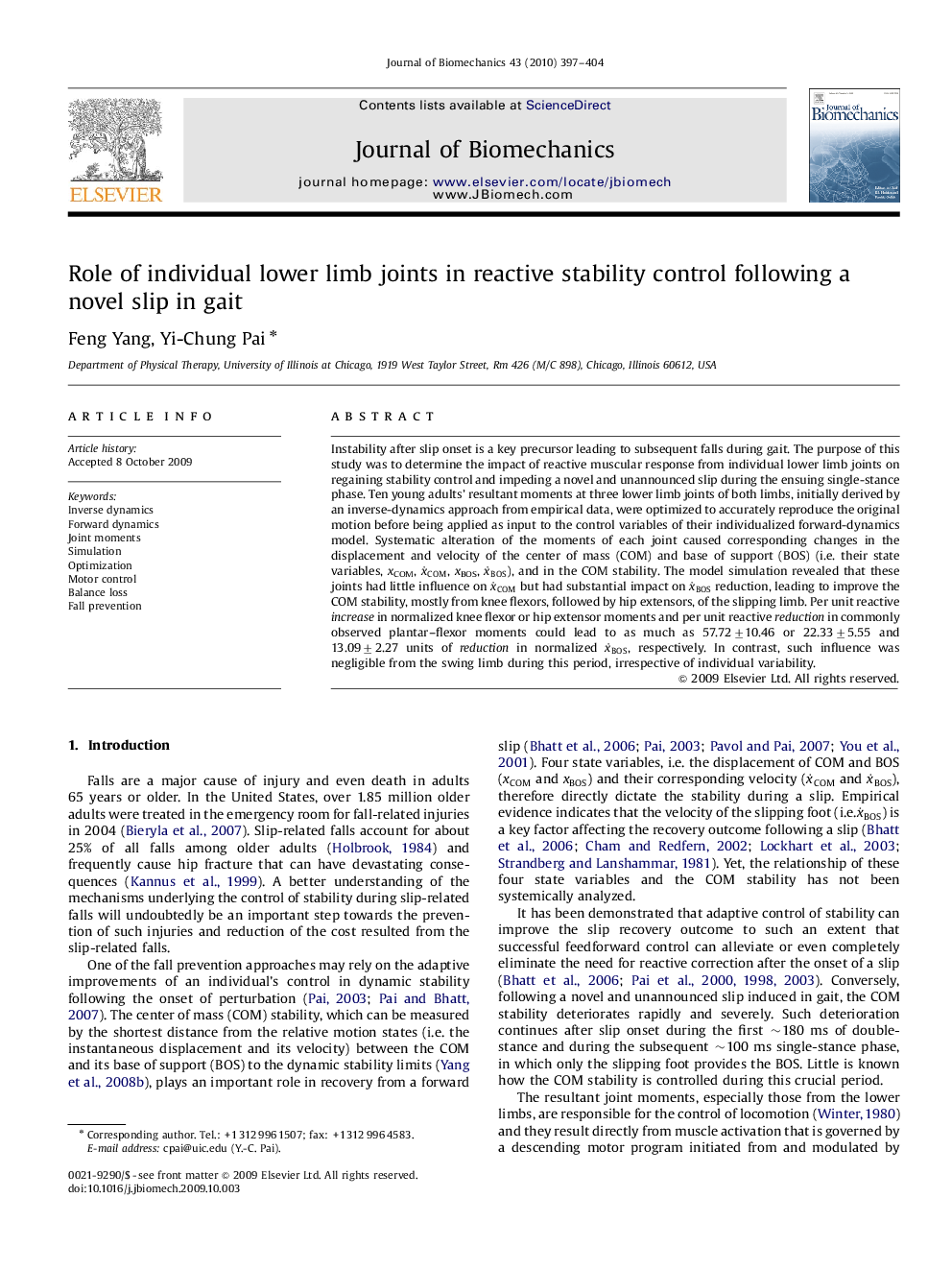| Article ID | Journal | Published Year | Pages | File Type |
|---|---|---|---|---|
| 872718 | Journal of Biomechanics | 2010 | 8 Pages |
Instability after slip onset is a key precursor leading to subsequent falls during gait. The purpose of this study was to determine the impact of reactive muscular response from individual lower limb joints on regaining stability control and impeding a novel and unannounced slip during the ensuing single-stance phase. Ten young adults’ resultant moments at three lower limb joints of both limbs, initially derived by an inverse-dynamics approach from empirical data, were optimized to accurately reproduce the original motion before being applied as input to the control variables of their individualized forward-dynamics model. Systematic alteration of the moments of each joint caused corresponding changes in the displacement and velocity of the center of mass (COM) and base of support (BOS) (i.e. their state variables, xCOM, x˙COM, xBOS, x˙BOS), and in the COM stability. The model simulation revealed that these joints had little influence on x˙COM but had substantial impact on x˙BOS reduction, leading to improve the COM stability, mostly from knee flexors, followed by hip extensors, of the slipping limb. Per unit reactive increase in normalized knee flexor or hip extensor moments and per unit reactive reduction in commonly observed plantar–flexor moments could lead to as much as 57.72±10.46 or 22.33±5.55 and 13.09±2.27 units of reduction in normalized x˙BOS, respectively. In contrast, such influence was negligible from the swing limb during this period, irrespective of individual variability.
